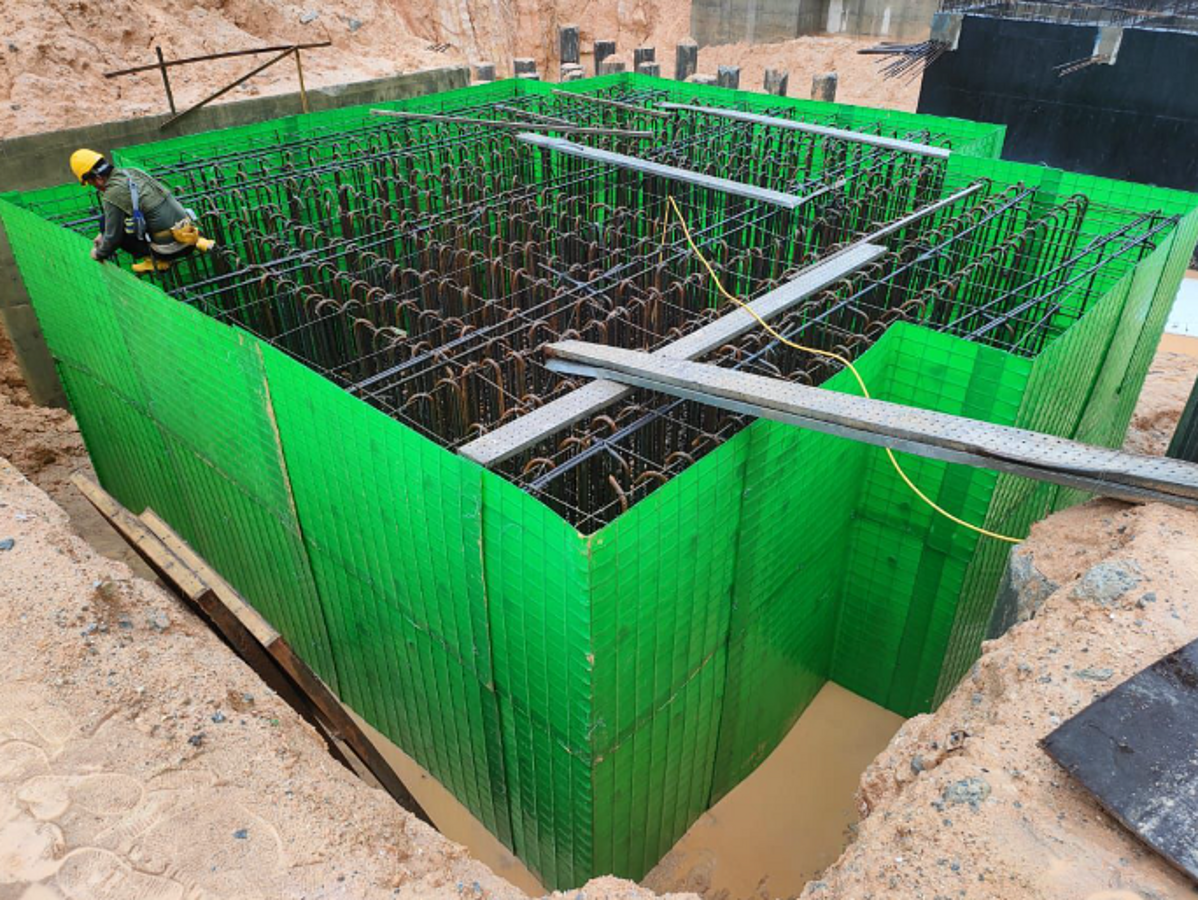The Light Rail Transit Line 1 (LRT-1) Cavite Extension is expected to be completed by 2031, an official of the Light Rail Manila Corporation (LRMC) said on Friday.
"[For] Phase 2 and 3, [we are] meeting with the DOTr (Department of Transportation) to be able to commence the construction. We have to clarify a few points before we proceed," LRMC General Manager Enrico Benipayo said in a briefing during the LRT-1 Cavite Extension Phase 1 site visit at the Dr. Santos Station in Parañaque City.
"In terms of length of construction and pre-activities prior to construction such as financial closure, all the other pre-requisites for the construction, we hope that by 2031, ROWs 2 and 3 would be completed. There are preliminary works already started as far as right of way acquisition is concerned," he said.
With a project cost of PHP64.915 billion, the LRT-1 Cavite Extension is being financed through a hybrid model consisting of PHP17.80 billion in official development assistance (ODA) from the Japan International Cooperation Agency (JICA); PHP39.57 billion from the private sector operator LRMC; and PHP7.55 billion from the government of the Philippines.
The project consists of three packages and is expected to add about 300,000 passengers to the daily LRT-1 ridership, bringing the total to 800,000, during the first year of full operations in 2031.
It will connect Manila to Cavite, reducing travel time from Baclaran, Pasay City to Niog, Cavite from 1 hour and 10 minutes via local roads to only 25 minutes via train.
The construction of the Phase 1 is progressing as scheduled with its 98.2 percent completion rate as of end April 2024.
The project will add 6.2 kilometers to the existing LRT-1 line from Baclaran Station in Pasay City to Dr. Santos Station in Parañaque City.
Phase 1 which is expected to be operational before the end of the year, is capable of serving 600,000 passengers daily.
The five new stations under Phase 1 are currently at various stages of completion with Redemptorist Station registering 97.4 percent; Manila International Airport Station at 97.2 percent; Asia World Station at 90.4 percent; Ninoy Aquino Station at 93.5 percent; and Dr. Santos Station at 97.7 percent.
LRT-1 Dr. Santos Station, the end terminal for Phase 1, will serve as a major transit hub. Passengers will have seamless access to various modes of transportation through the intermodal facility.
The intermodal facility is located with access to and from Dr. A. Santos Avenue and C5 Road Extension and will have designated bays for public buses, jeepneys, taxis, private cars, motorcycles, as well as dedicated parking slots for PWDs.
“The nearing completion of the LRT-1 Cavite Extension Phase 1 is a testament to the government and private sector’s commitment to improving public transportation in the country. An excellent showcase of how public private partnership (PPP) works, this project underscores LRMC’s commitment to providing a safe, convenient, and passenger-centric commuting experience for everyone,” Benipayo said.
DOTr Secretary Jaime Bautista said the intermodal transport hub would give a variety of choices to passengers.
“Magkakaroon rito ng jeepney, possible buses, UV express, and even motorcycle taxis. Maraming options ang mga passengers (There will be jeepneys, possibly buses, UV Express, and even motorcycle taxis. There will be a lot of options for passengers),” he said.
“The LRT-1 Cavite project will contribute to easing the traffic. With the operations of the project, maraming makaka-connect sa (many will be able to connect to) PITX, I think, will help many passengers, as well as to the airport. With this, it will improve accessibility and comfort to the riding public,” he said.
Once operational, Bautista said fewer persons would use their private cars, helping to ease traffic in the area.
“That will contribute to solving the traffic problem. Not necessarily eliminate traffic, but it will contribute to easing the traffic in this area,” he said.
Transportation Assistant Secretary for Rails Jorjette Aquino said the fare matrix for the LRT-1 extension would be the same as the existing Line 1.
“Regarding the fare, currently we will be applying the same fare, which is PHP13.29 boarding fare and for distance fare, we're going to allow PHP1.21 so that's the same as the existing line for LRT1 and LRT2,” Aquino said.
LRMC officials welcomed various government partners during the high-level site inspection by the DOTr led by Bautista.
Joining the inspection activity were Finance Secretary Ralph Recto; Department of Public Works and Highways Undersecretary Maria Catalina Cabral; Metropolitan Manila Development Authority Chairman Romando Artes; Parañaque City District 1 Rep. Edwin Olivarez; Parañaque City Mayor Eric Olivarez; Japan International Cooperation Agency Philippines Chief Representative Takema Sakamoto; Light Rail Transit Authority Administrator Hernando Cabrera; and Embassy of Japan Representative Masahi Ide.
“The project represents a dramatic shift in transit-oriented development here in the Philippines. It will not only connect Manila to Cavite but also act as a catalyst for economic activity, creating new opportunities for more jobs and businesses to flourish in Region 4-A or the Calabarzon,” Finance Secretary Ralph Recto said. By Anna Leah Gonzales
Article courtesy of the Philippine News Agency










